How to tie the Invicta
Master the tying of this classic pattern for river and stillwater, tempter of brown trout, sea-trout and salmon
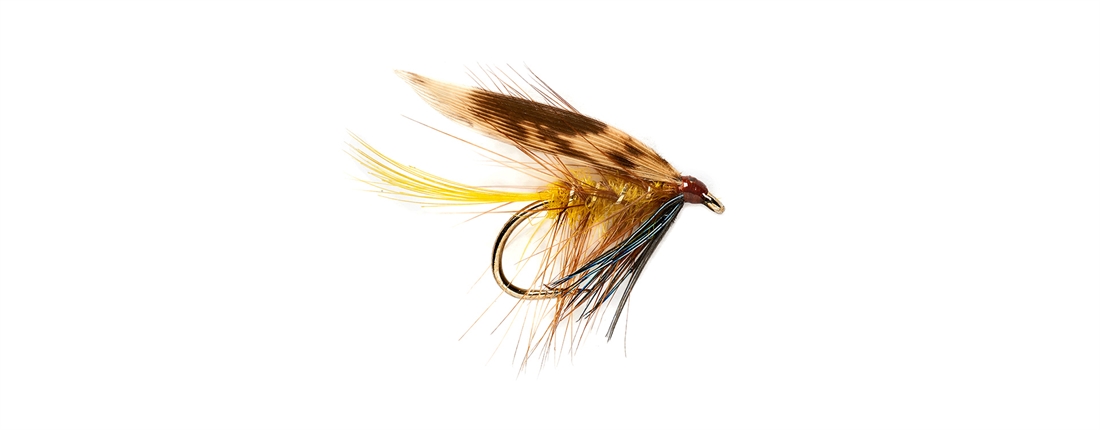
Few flies have spawned more variations, but the original remains a useful hatching sedge imitation.
Material list for the Invicta
Hook: Size 10-14 wet-fly Thread: Brown Tail: Golden pheasant crest feather Rib: Fine oval gold tinsel Body: Yellow seal’s fur Body hackle: Ginger or brown cock Throat hackle: Blue jay fibres or dyed-blue guinea fowl Wing: Hen pheasant wing
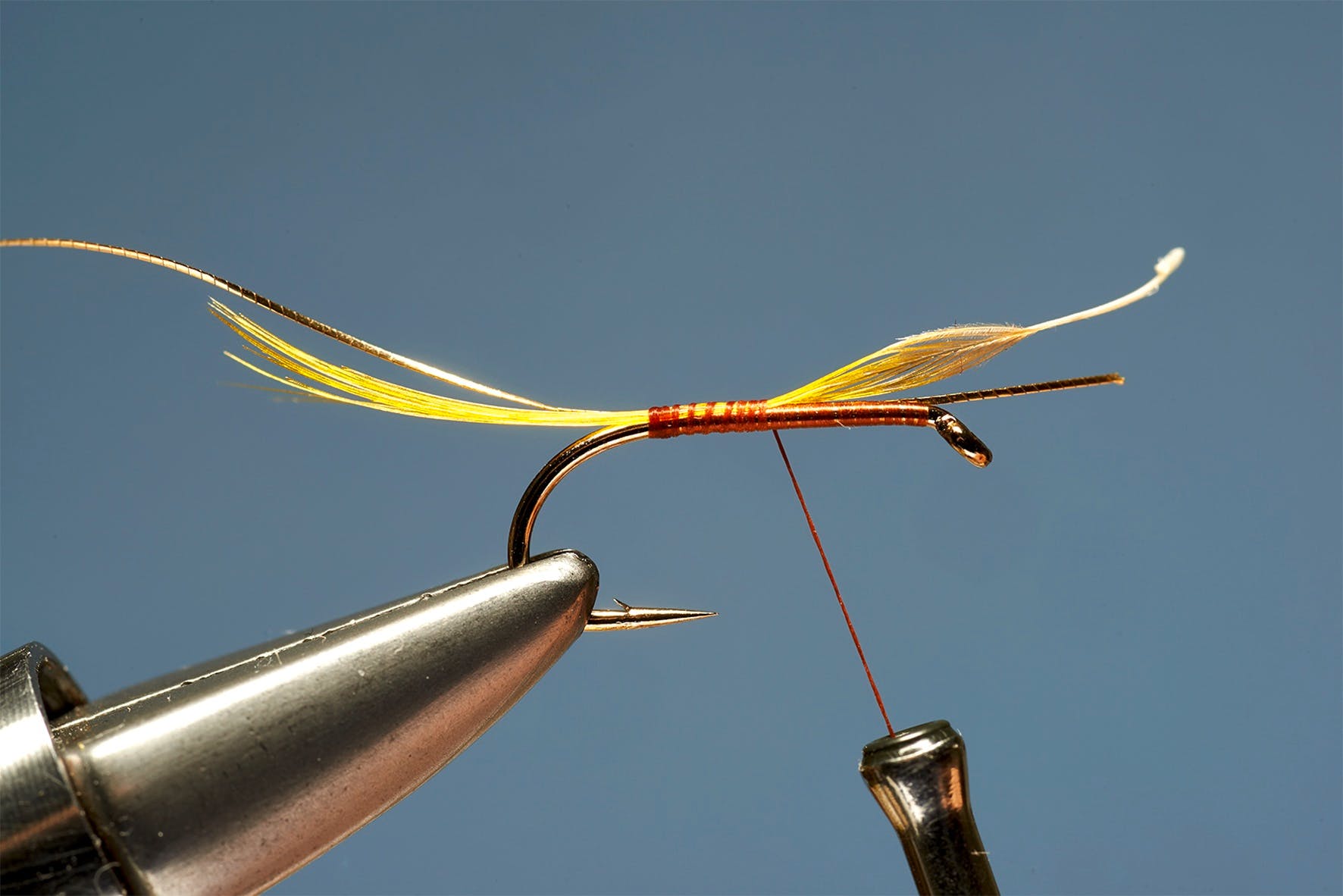
Step 1. Fix the hook in the vice, then wind the thread to the bend. Catch in a golden pheasant crest feather and a length of oval gold tinsel.
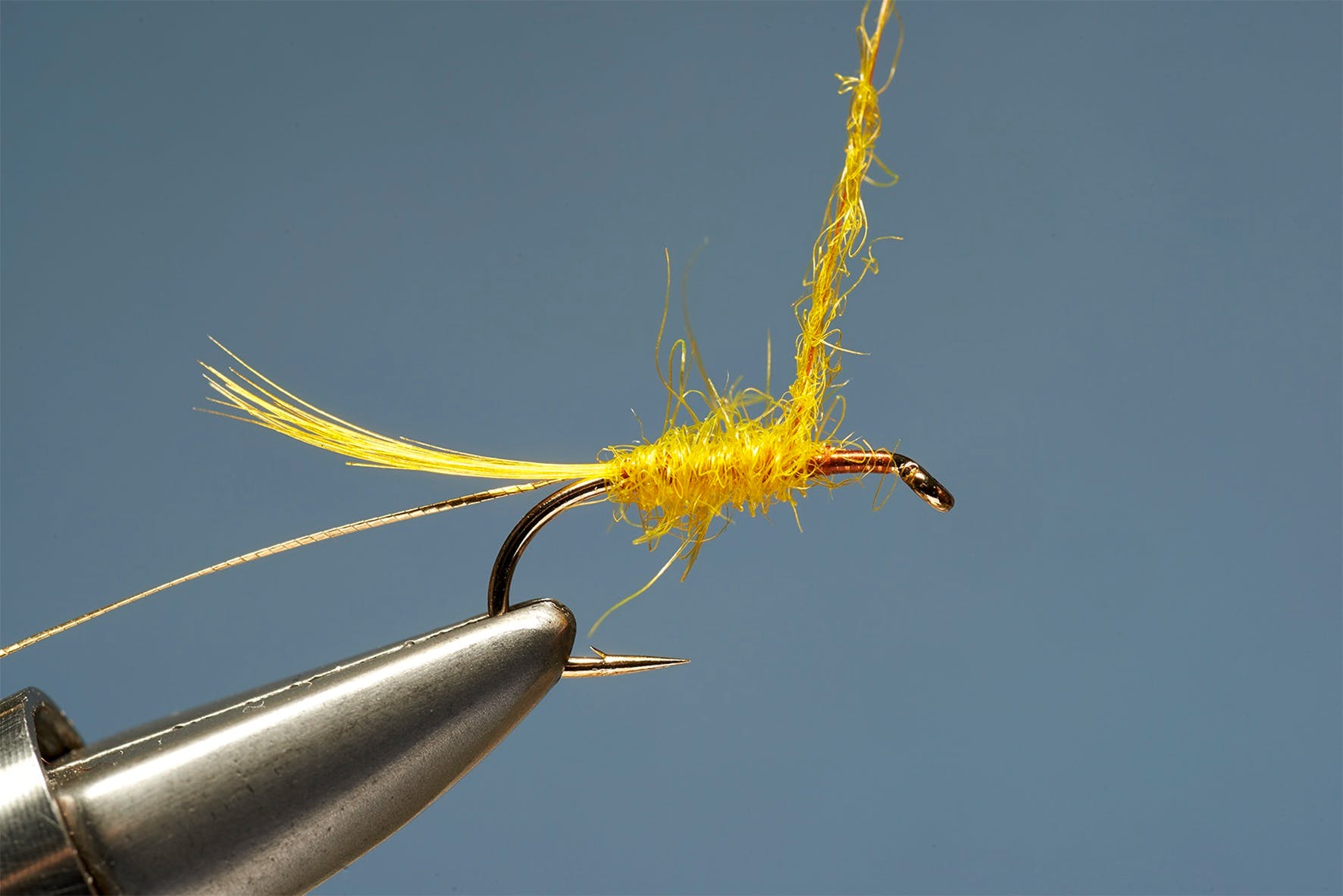
Step 2. Secure the ends of the golden pheasant crest and tinsel with thread and trim off the waste. Apply a body of dubbed yellow seal’s fur.
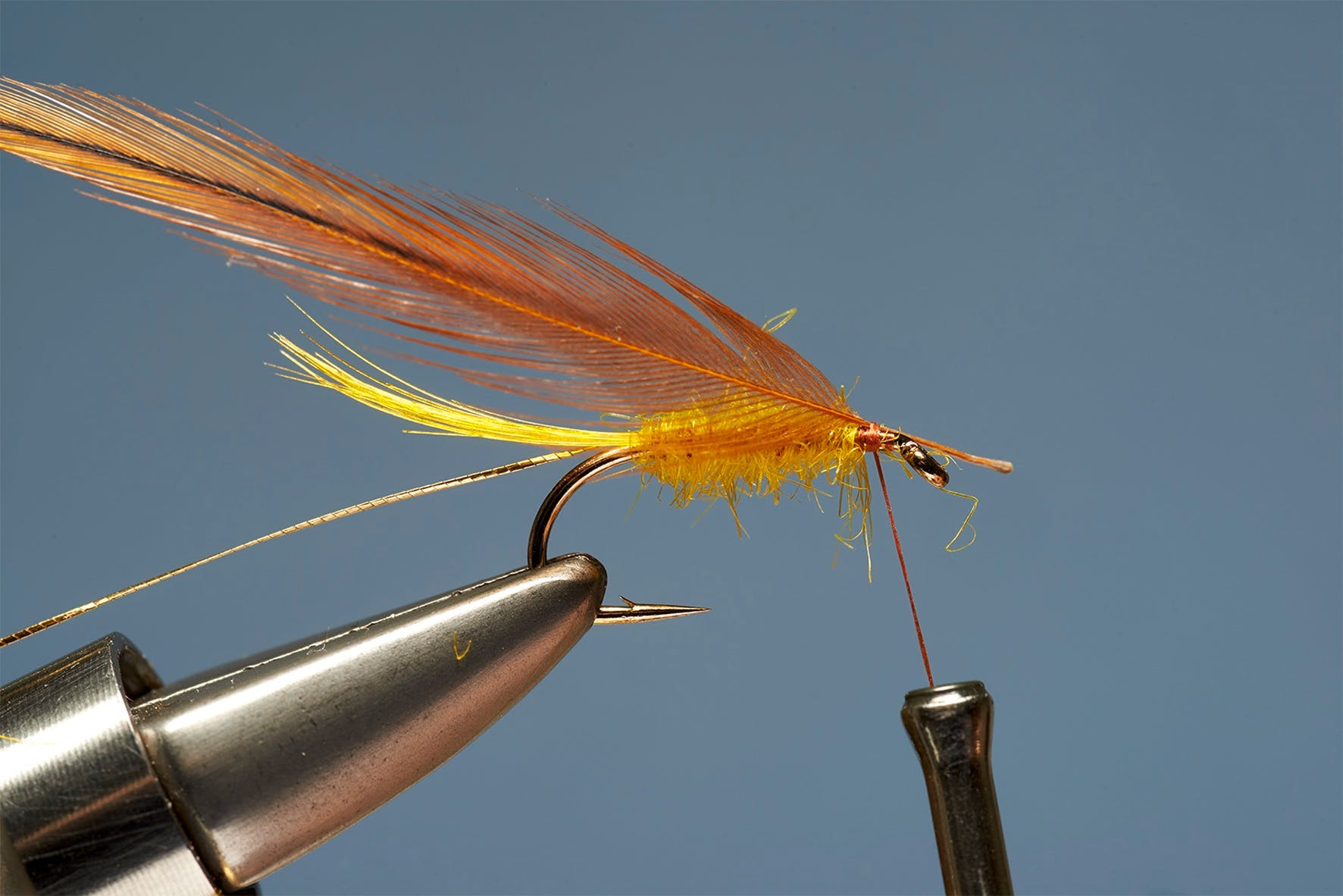
Step 3. Finish the body a short distance from the eye, leaving room for the hackles and wing. Prepare and catch in a brown cock hackle.
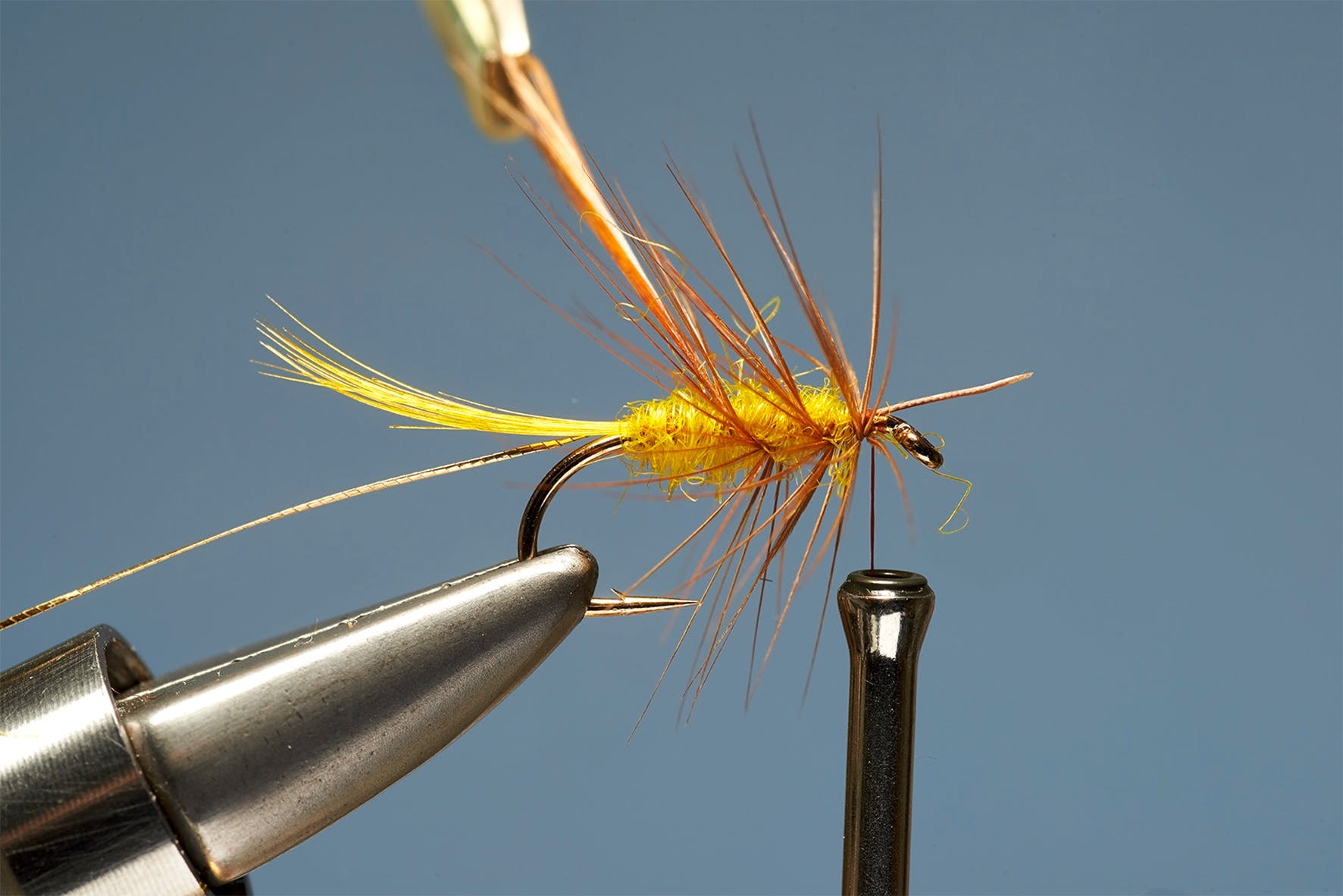
Step 4. With the hackle-stem locked behind the eye, grasp the hackle-tip with hackle pliers and wind it over the body in evenly spaced turns.
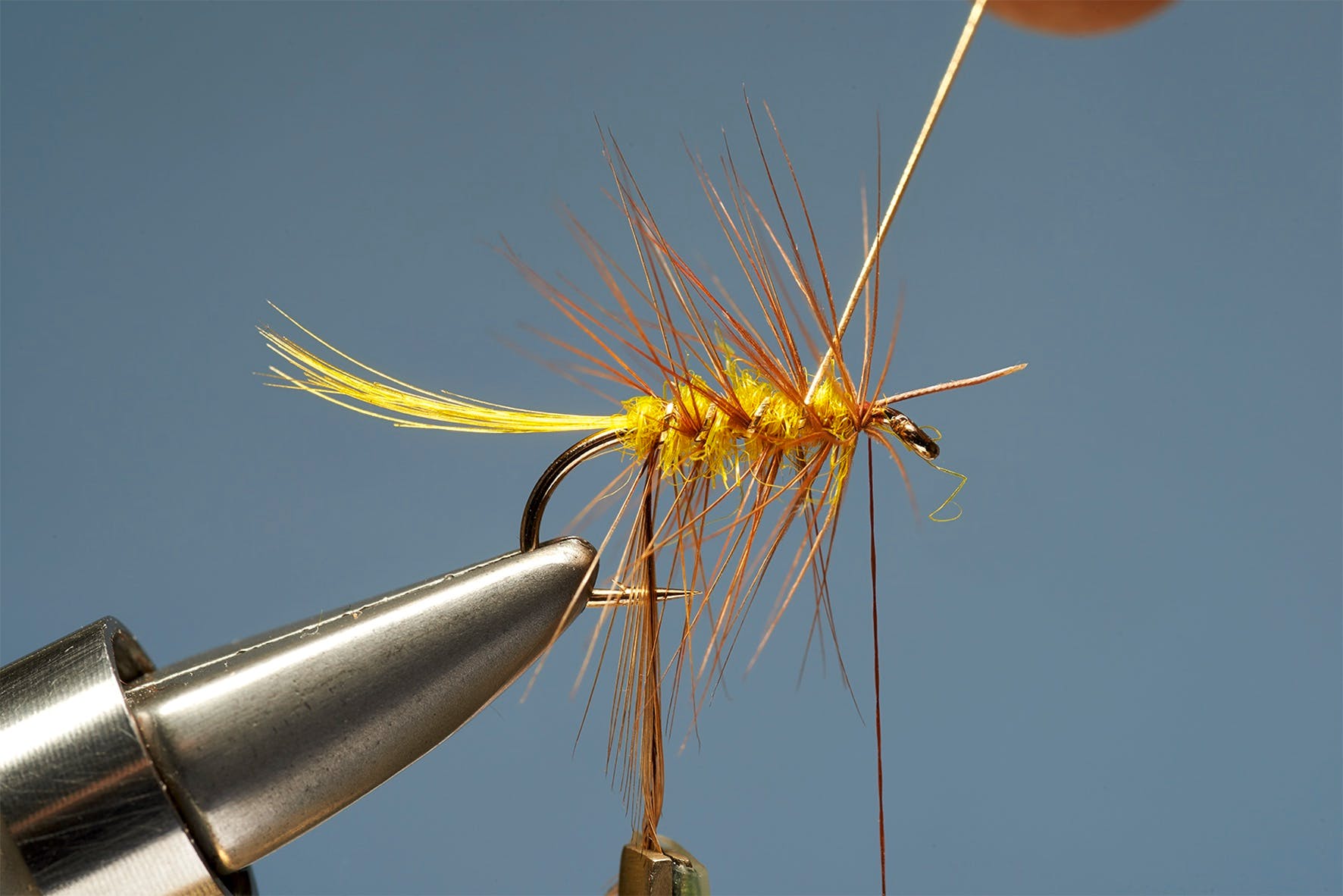
Step 5. Leaving the hackle-tip parked at the end of the body, take hold of the tinsel and wind it towards the eye, locking the hackle in place.
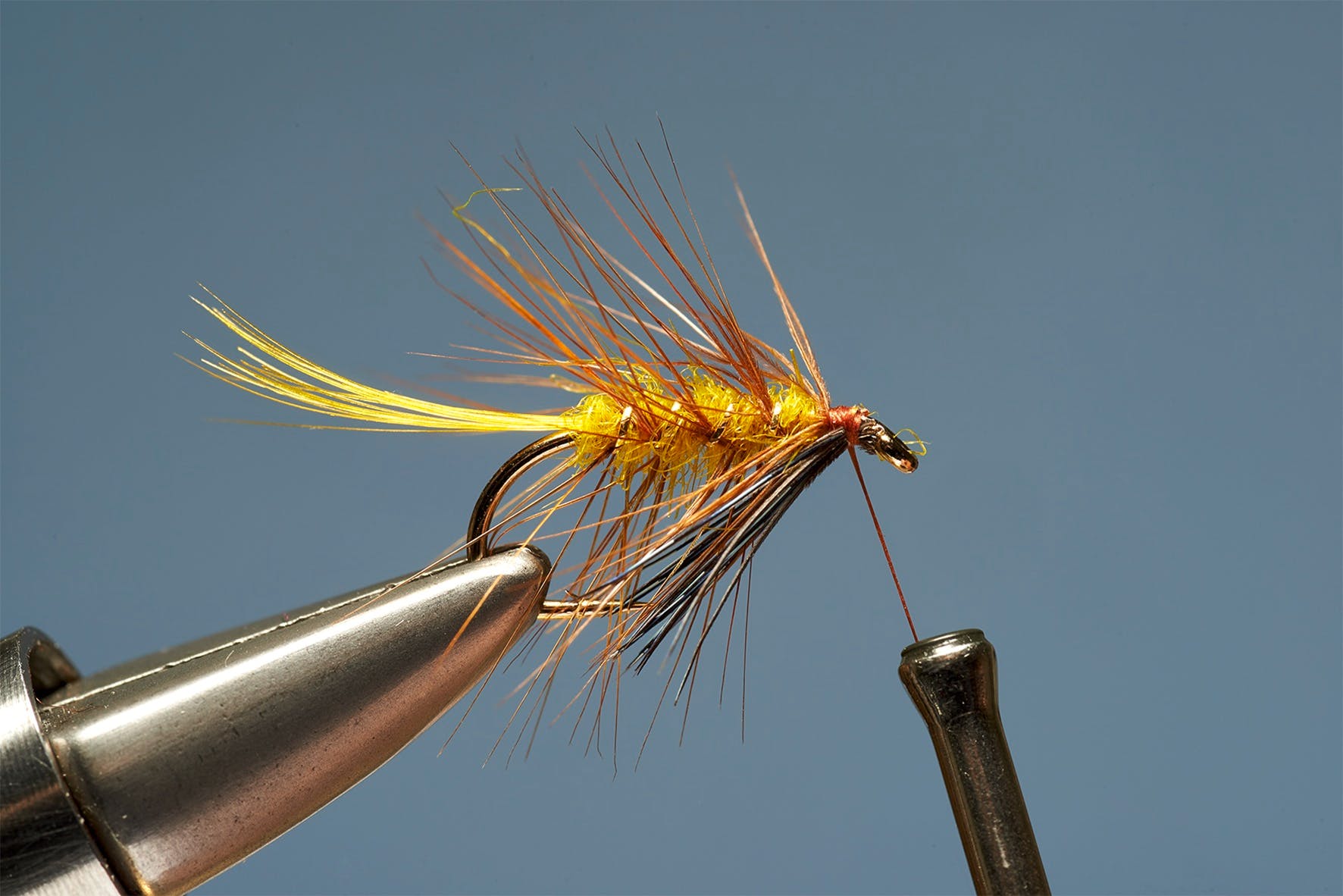
Step 6. Secure the rib with thread, then trim off the waste. Take a pinch of blue jay fibres, trim to length and catch in under the body.
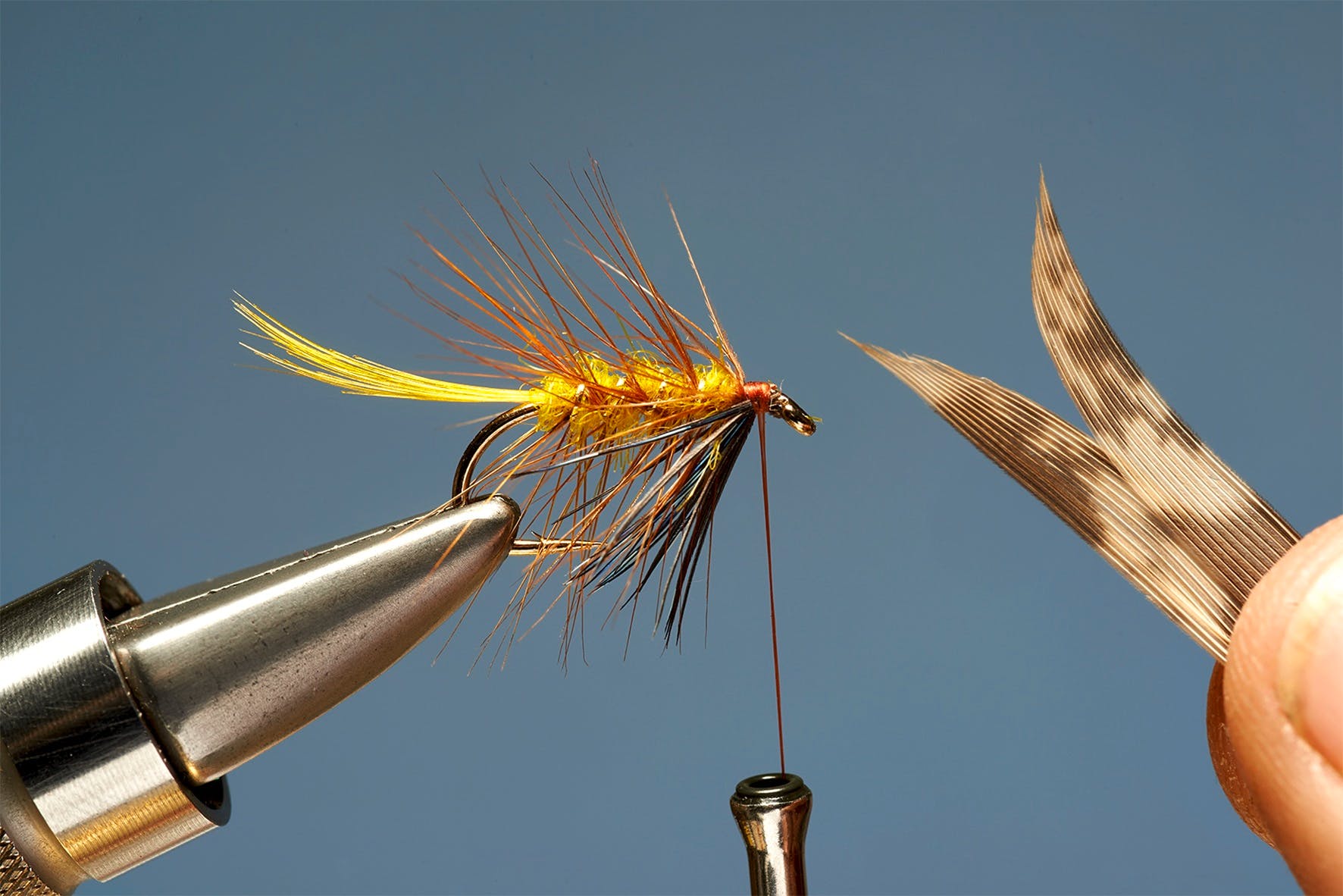
Step 7. Ease the jay fibres around either side of the body to soften the effect, then prepare two matching slips of hen-pheasant wing feather.
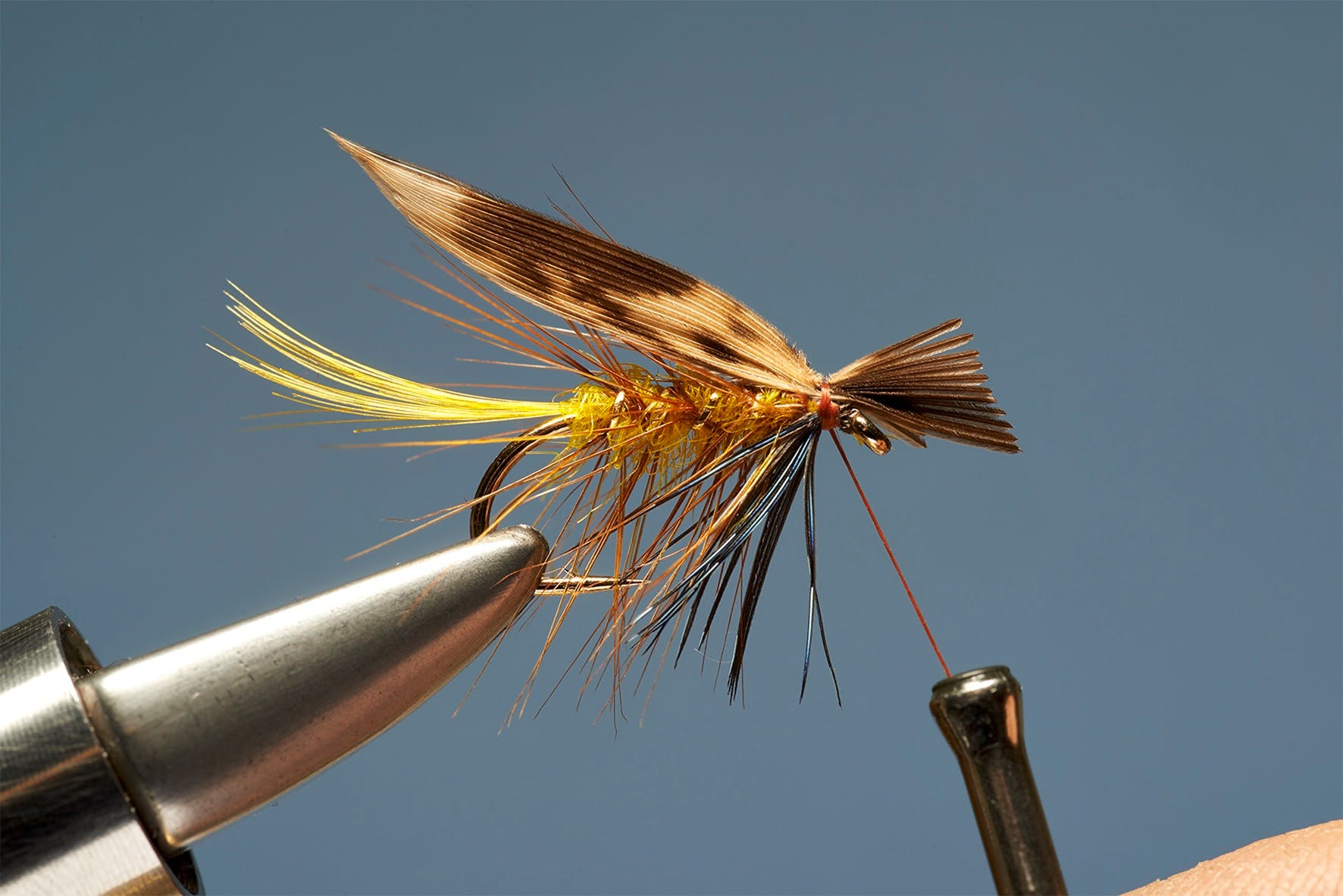
Step 8. Place the slips together, shiny sides in, ensuring the tips are level. Catch in the wing at the eye with two loose winging loops.
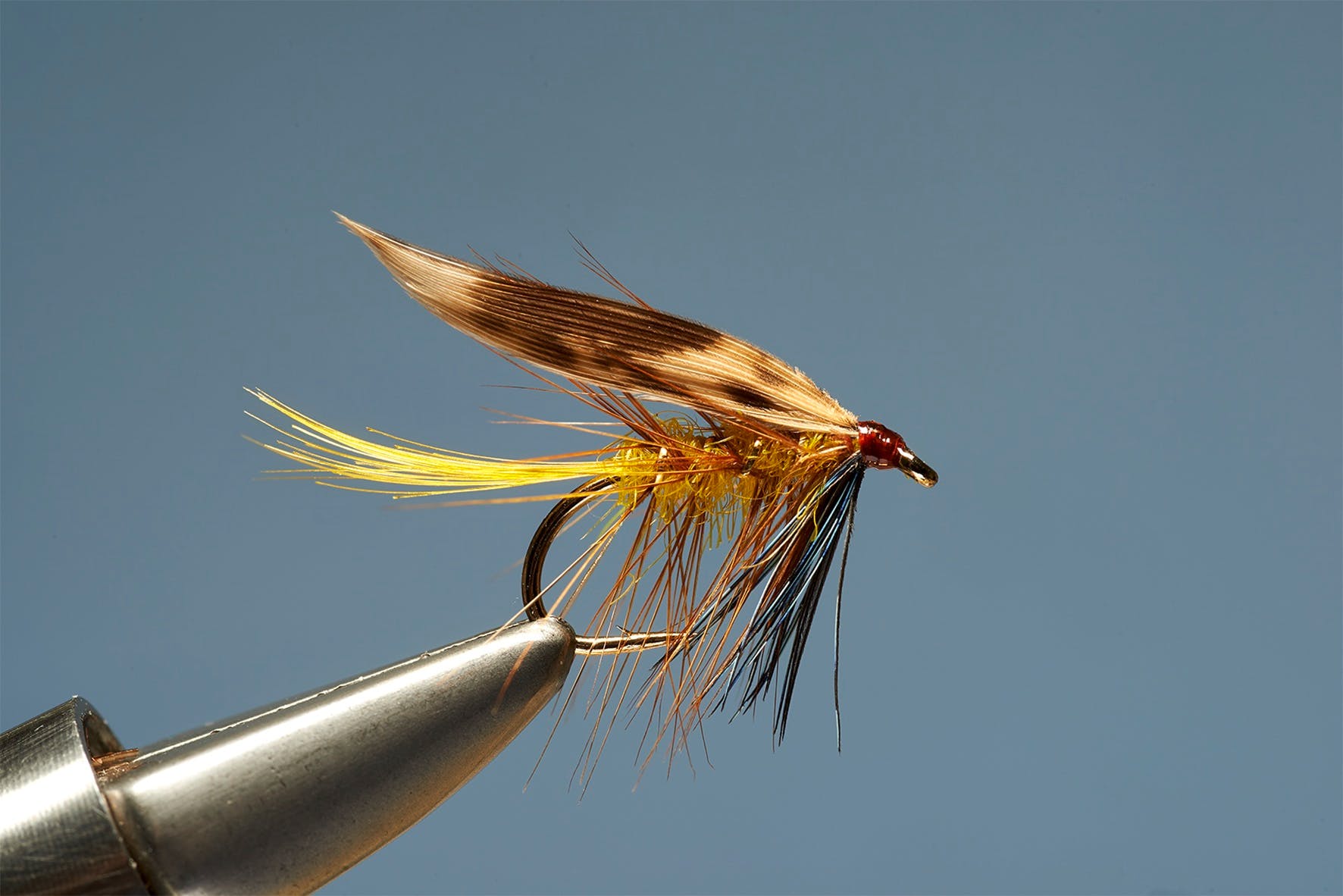
Step 9. With the wing positioned straight over the body, fix it in place with tight thread turns. Trim off the waste and apply a whip finish.





